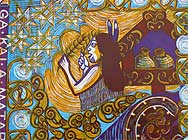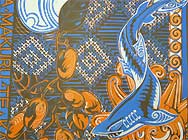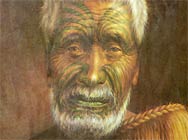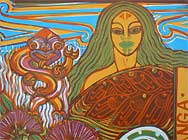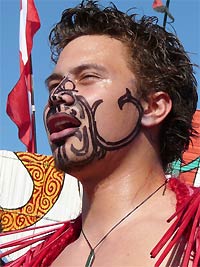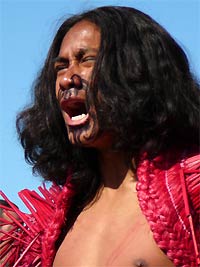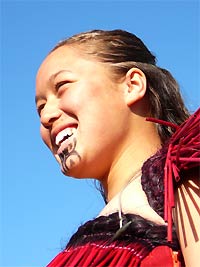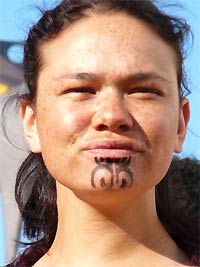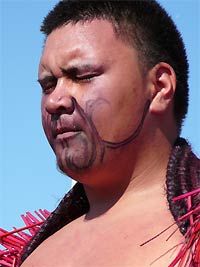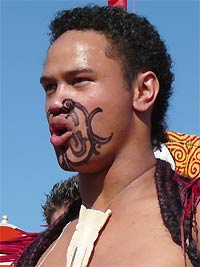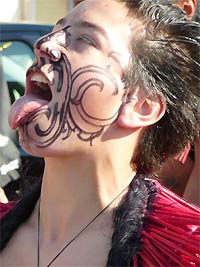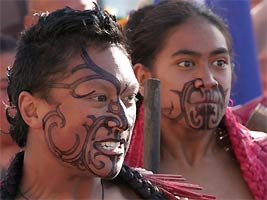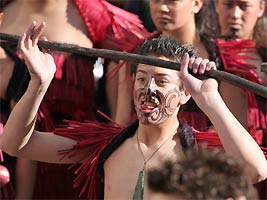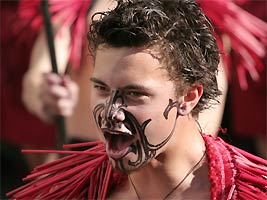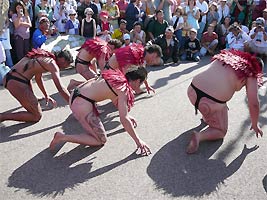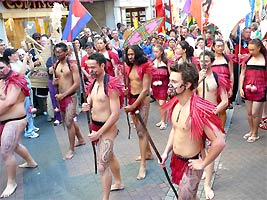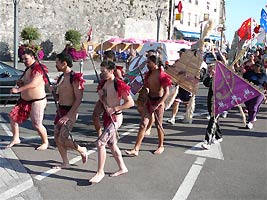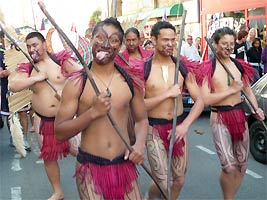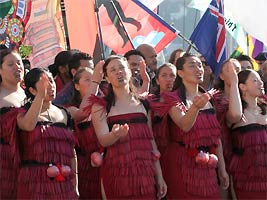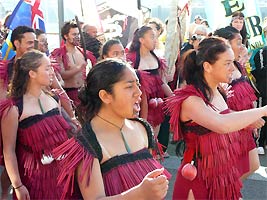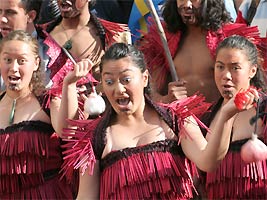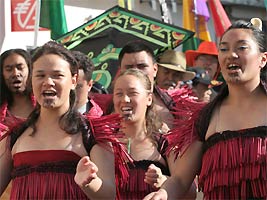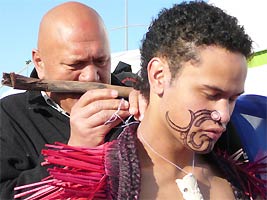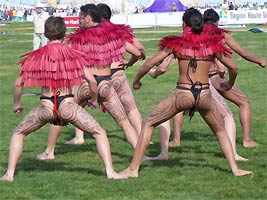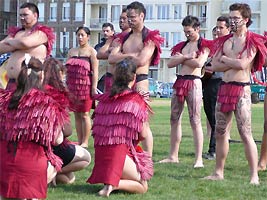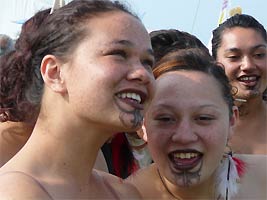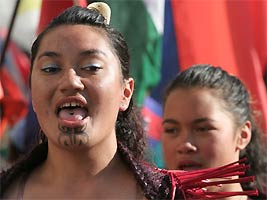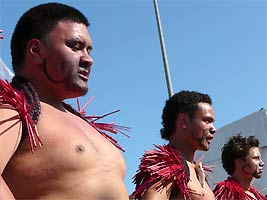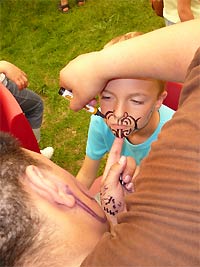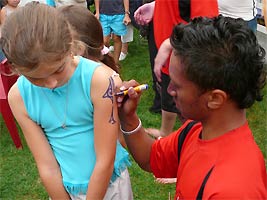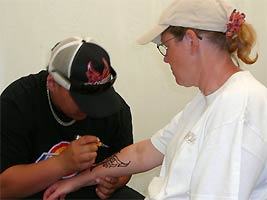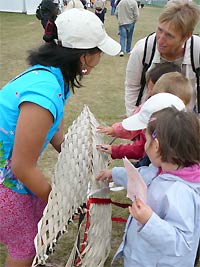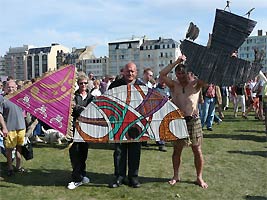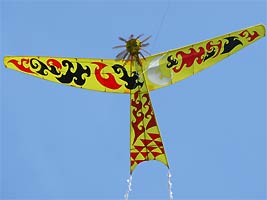| The Maori |
 |
|
This year the guest of honour was the New Zealand. And the News Zealand it is not only Peter Lynn, although always so present in the sky with his larges inflatable kites. It is also Maori, 22 people have make the voyage until Dieppe.The maori are the indigenous people of New Zealand. In the beginning, “Maori” literally meant “ordinary” “native”. The natives indicated themselves as being “tangata Maori”, that meant “indigenous men”.
|
| |
| |
They show us their culture and their traditions of their kites, but also through their games, their dances, their traditional songs and prayers (Karakia). We don’t all understand, but it was very fascinating and moving.
|
| |
| |
During the parade and each day, the maori interpreted ritual dances, Haka. Important custom at the time of social meetings to welcome. During these dances the faces of Maori change and become extremely expressive, very warlike.
|
| |
The men strike the ground with a stick (Tai aha) while the women make whirl with skill the “poi” (light ballast connected to a cord). The tremor of their hands at the time of the dance represents Tane-rore (tremor of the air during the heats days of summer). The objective of these dances being to frighten the enemy to avoid fighting.
|
| |
| |
Tattoos (Moko) reinforce the expressions. These tattoos are drawing especially on the face, but certain warriors have also tattooings in spiral on the buttocks and often to the knees. |
| |
| The women are a little tattooed: underlined lips of dark blue. Among Maori women present at Dieppe, oldest have the really tattooed chin. At young people it is motif painted with ink, and sometimes some fine lines decorated the cheeks and the face. |
| |
| |
|
|
|
Meetings tattooings (with markers) in the Maori tent, with traditional motifs. One of the tattoers draws me a superb stylized bird, which I would keep a few days. The children had to turn over to the school with the marks of their passage in Dieppe!
|
|
|
| |
|
|
|
The Maori kite often called “Te Manu Tukutuku” (Manu = bird). The kites were regarded as a link between sky and ground and are closely connected to “Matariki” (small star beam or Pleiades). Traditionally for Maori, “Matariki” announces the moment to celebrate New Year's day. They are manufactured from plants, decorated shells and feathers and are very light. Some were used as weapons of war by pricking right towards.
|
|
|
|
| |
|
|
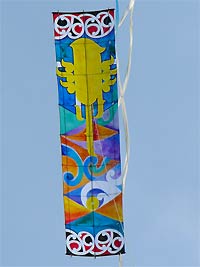 |
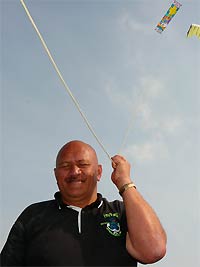 |
The most common kites were constructed from toe toe (New Zealand pampas grass), manuka (one of New Zealand's most common shrubs), harakeke (flax), raupo (swamp plant) and aute (mulberry) bark. |
| |
|
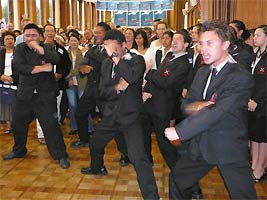 |
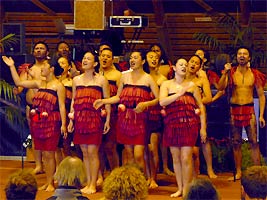 |
The large kites are called Manu Atua, Manu Whara and Manu Tangata.
Michel Gressier make during the week this kite with the maori drawings. It is the symbol of the bird. And Te Ngaehe Wikaïra takes a real pleasure to fly it, even if it is not completely finished.
|
|
|
Traditional plays were also presented at the public, like the “Ki-O-Rahi” and “Mu Torere” (but there I do not have an explanation). We can hear last once, the Maori songs during the gala dinner. It's a great pity that you could not sell to us these music.
|
| |
|
|
|
|
